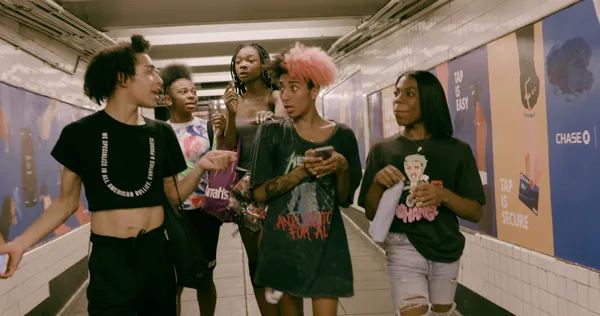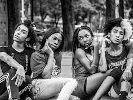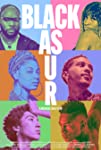Eye For Film >> Movies >> Black As U R (2022) Film Review
Black As U R
Reviewed by: Jennie Kermode

Whilst black people in the US have never been without cause for protest, the demonstrations which followed the death of George Floyd on 25 May 2020 were something different. Because they took place during lockdown, when most people were at home and other news was slow, they captured the attention of viewers all around the world and saw the Black Lives Matter movement, which had been running since 2013, a household name. Micheal Rice, who directed this film, was among the protestors, but whilst he was out there on the streets, something else happened. In a grocery store in Minneapolis, a young Black woman was beaten to within an inch of her life – by other Black people.
It happened because she was trans, and it impacted Rice hard, as a gay man. He found himself wondering exactly which Black lives matter, and decided to make this film, exploring prejudice against LGBTQ+ people within his community and inviting those at the sharp end to share their stories. It features footage of the attack on Dior, parts of which viewers may find distressing, plus an interview with another black trans woman, Dominique Rem'mie Fells, who was murdered shortly afterwards.

The film is framed by footage from the studio in New York City where Rice is conducting rehearsals for a play. As an artist, he says, he feels a compulsion to speak truth and to give voice to the marginalised and misunderstood. To him, voice and visibility are key factors in the struggle against prejudice. Dior seems to have agreed with this. Fighting her way back into the store after her attackers dragged her outside, she said “If I’m gonna die, I’m gonna die on camera,” and Rice compares this to the mother of Emmet Till holding an open casket funeral for her son after refusing to let his injuries be covered up, ensuring that the world would see what had been done to him.
Out in the streets of the city, Rice gives the Black LGBTQ+ people he meets a chance to tell their stories in less desperate circumstances, though there are still difficult issues raised. Purple-haired Lyrik talks about her mother trying to beat the transness out of her. Palmer, raised as a girl in a very religious family which campaigned against LGBTQ+ events, grew up into a man, developed seizures from stress, and shot himself in the stomach before he found a way to be at peace with himself. Lexi, who self-describes as ‘a bit of a chameleon’ and is about to turn 20, talks about how several of her trans friends have been murdered. Later, in a studio, we meet Goldie Doll, who talks about getting in fights over transphobic bullying even at elementary school, but her story has a happy ending. A teacher noticed when she was suicidal and she was taken to a psych ward; now she’s carving out a successful career as a rapper.
At the core of the film is an exploration of the intersectional issues faced by Black LGBTQ+ people. Rice addresses the location of power in patriarchy, the way that gay men are often seen as giving up maleness and the power associated with it in a context where that is additionally problematic because of the disadvantage they already face in a racially divided society. He looks at how parents perceive queerness as a symptom of oppression and not as who their children really are. In one particularly tense section of the film, he goes into a barbershop to discuss homophobia and transphobia with the men who happen to be in there, gradually working past initial hostility to tease out more complex and considered viewpoints as the men reflect on how they would react if they had children who turned out to be gay.
There is a sense of fear here, too, about what that might mean for loved ones’ life chances. Black trans woman currently face disproportionately high murder rates in the US, especially if they are also engaged in sex work, which, due to family rejection and discrimination in the job market, is often the only way they can survive. Poor health care means that one in two US black gay men is HIV positive by the age of 50. Showing us aerial pictures of a mass grave just outside the city, used during the worst part of the early Covid outbreak, Rice reflects on the low value attached to human life.
Is there hope for change in the near future? Despite a montage of images reminding us of the threat to Black and LGBTQ+ people alike posed by the right, Rice thinks so, and the very different attitude of his younger interviewees supports this idea. The simple act of giving them this platform is a revolutionary thing in itself, providing role models for others who may feel trapped in the closet, sending the message that it is possible to be black and LGBTQ+ and at ease with oneself. Rice’s film, which screened at Newfest 2022, is not simply defiant in pointing out that these lives matter too, but offers positive reasons to move towards inclusion, to stand in solidarity for the sake of the whole community.
Reviewed on: 23 Oct 2022
















